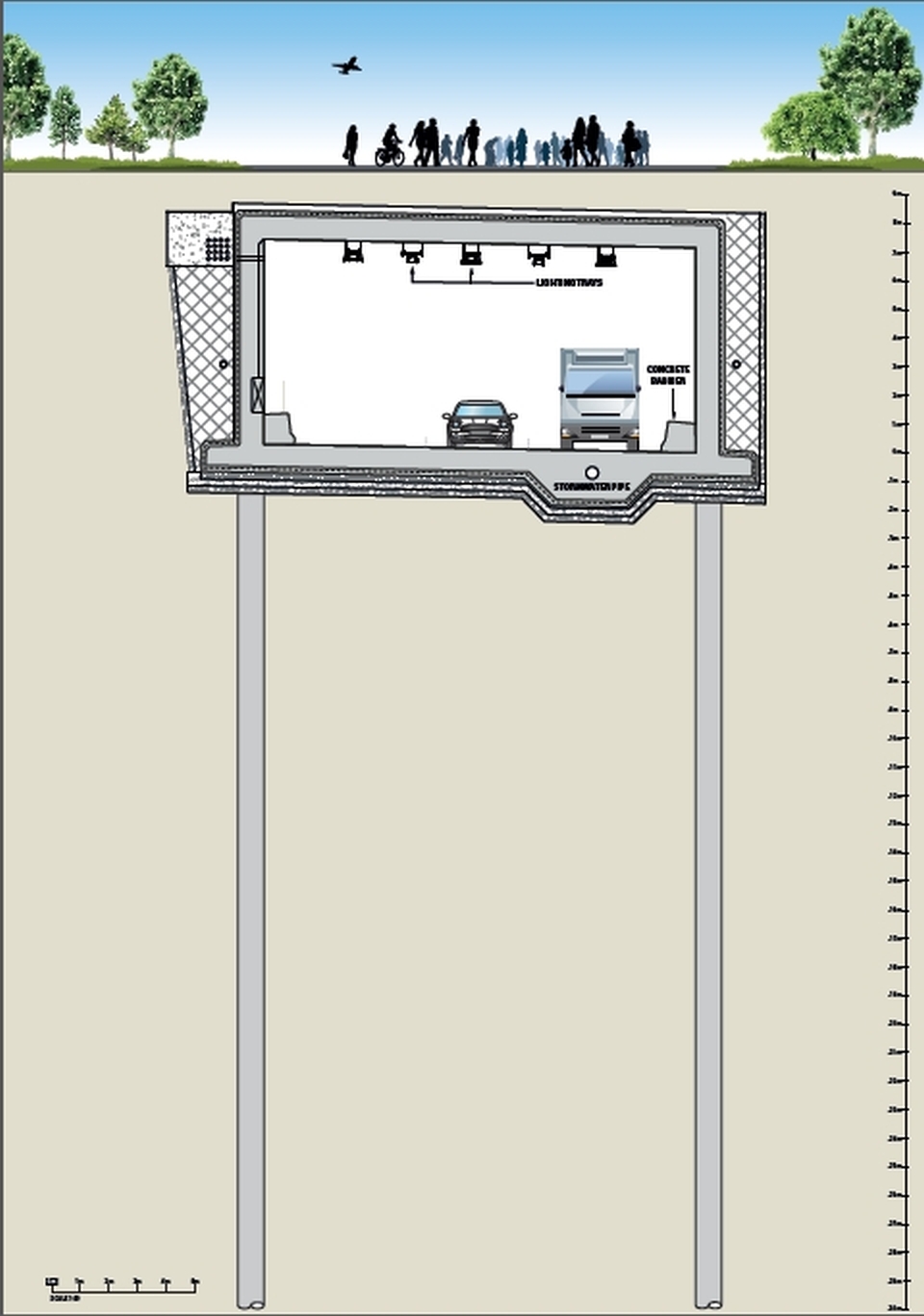Digging deep into Buckle Street
- The tunnel is not being bored through rock
- The tunnel is a concrete box in a trench sometimes called a “cut and cover” project.
A 300 metre long trench has been dug into Buckle Street.
- The trench is 18 metres wide
- The trench is 12m deep at the sides for drainage and 10m deep through the middle
- It will take 4,200 truck and trailer loads to take the soil away (38,000 cubic metres)
- The soil is taken to a landfill where it can be used in other projects.
Underground pipes
Many pipes carrying services to homes and businesses are buried in the ground beneath Buckle Street.
These pipes carry;
- gas
- storm water
- sewage
- telecommunications
- electricity
These services have to be moved out of the way so the trench can be dug for the new tunnel and road;
- Using a digger might break the pipes
- To avoid damaging the pipes, water is sprayed onto the soil around the pipes
- The slushy water and soil is sucked up by a giant vacuum cleaner
- The exposed pipes can then be safely worked on.
Underneath Buckle Street is a 100 year-old sewer pipe;
- The sewer is made of bricks and is nearly a metre high
- It will not be moved
- It comes close to the new road at one point and extra care is being taken to protect it.
Making a Safe Tunnel
The tunnel and the road for the National War Memorial Park Underpass have been designed with people’s safety in mind.
- Earthquakes in the past have lifted up the land in Wellington
- The engineers are designing the tunnel to make it safe from earthquakes
- The tunnel will be anchored to concrete piles that will go down to the bedrock (10–30 metres)
- At first the engineers were going to use straight piles
- They have now decided to make piles with a bell-shape at the bottom
- The bell-shape designed will help the tunnel withstand a 1-in-2,500 year earthquake.
The engineers are making plans in case there is an accident or car breakdown in the tunnel;
- Closed circuit cameras will keep an eye on what is happening
- The cameras work 24 hours a day, seven days a week
- They alert emergency services if anything goes wrong.
Safety on the work site
A wall protects the workers and keeps the soil in place while the tunnel and road are being built
- The retaining wall is made from steel kingposts with timber poles slotted in between
- This wall holds the trench open for the tunnel and the road to be built
- Another wall of interlocking steel sheet posts protects the foundations of the historic Mount Cook Police Barracks and an apartment building
Keeping safe is important on the work site.
- There are cranes, diggers and loaders moving around where people are working
- The Memorial Park Alliance employs a safety manager who makes sure everyone knows how to work safely around machinery.






